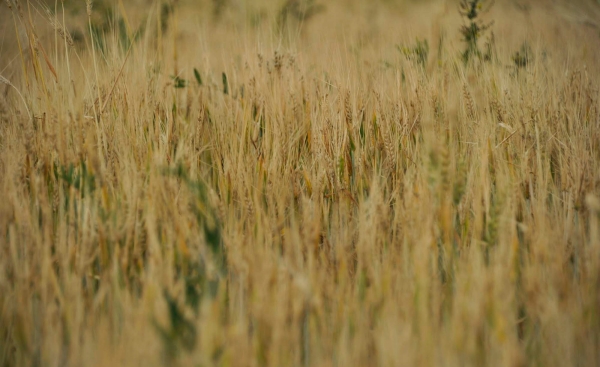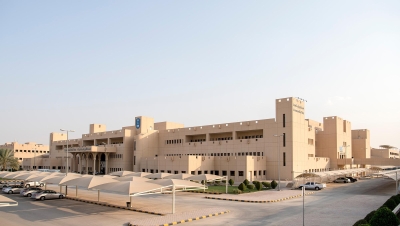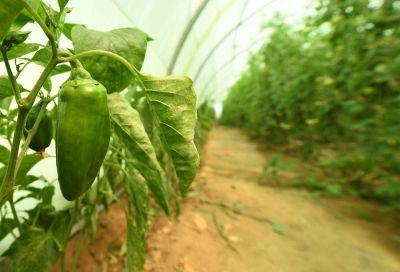

Barley Cultivation in the Kingdom of Saudi Arabia: Barley, recognized as a field crop, finds suitability for cultivation in select regions within the Kingdom. With the issuance of a resolution by the Council of Ministers to stop green fodder cultivation, including barley, in 2018, due to its significant water consumption, barley cultivation persists in the Kingdom on a limited scale and is subject to controls set by the Ministry of Environment, Water, and Agriculture.
Regulations for barley cultivation in the Kingdom
Even though the Kingdom has suspended fodder cultivation in 2018, farmers with agricultural licenses are still allowed to grow barley. They must register their farm information through the 'Sajil' program and comply with the regulations regarding the ban on cultivating green fodder. Additionally, they are prohibited from expanding their current land holdings or cultivating any new crops on agricultural land.
The ministry divided barley cultivation areas into three categories, to be included within the permitted agriculture, which are: an area of fifty ha and less, an area of one hundred ha and less, and an area of more than one hundred ha. Farmers are also compensated according to those areas.
Barley cultivation in an area of fifty ha and less
An area of fifty ha or less represents small farmers who cultivate barley within this area. The ministry has provided several options for them to completely stop barley cultivation. These options are financial compensation estimated at SAR4,000 for every ha planted, with a maximum of SAR200,000, or continuing to cultivate an area not exceeding fifty ha. The final option is cultivating wheat in an area of fifty ha, stopping after the end of the harvest season, and supplying wheat to the Saudi Grains Organization.
Barley cultivation in an area of one hundred ha and less
An area of one hundred ha and less represents the average farmer cultivating barley in an area between fifty and one hundred ha. The ministry has provided several options for them to completely stop barley cultivation. These options are financial compensation estimated at SAR4,000 for every ha planted, with a maximum of about SAR400,000, or continuing to cultivate an area not exceeding fifty ha and the farmer is entitled to receive financial compensation for the reduced area, estimated at SAR4,000 per cultivated ha, with a maximum of SAR200,000.
The final option is cultivating wheat in an area not exceeding fifty ha, stopping after the end of the harvest season, and supplying wheat to the Saudi Grains Organization, or obtaining financial compensation for the reduced area, estimated at SAR4,000 per ha with a maximum of SAR200,000.
Barley cultivation in an area of more than one hundred ha
Barley cultivation in an area of more than one hundred ha includes a segment of large farmers, agricultural companies, and dairy companies cultivating green fodder, including barley. The ministry has granted them the priority to invest in a number of alternatives according to its standards and procedures, after completely stopping barley cultivation. These alternatives include the possibility of investing in integrated feed factories on the condition of importing inputs, investing in the pastoral plants cultivation on the condition of using modern irrigation systems according to the areas and types determined by the ministry, investing in poultry projects and industries, investing in cattle breeding and fattening, and other various investments.
Barley germination in the Kingdom
Barley is germinated in the Kingdom by germinating barley grains artificially, without the need for agricultural land, using rooms that are air-conditioned with temperature, humidity, and lighting. They contain basins placed at a distance above each other, in which the grains are grown and fed with water containing fertilizer elements.
Barley germination activity in the Kingdom aims to provide green fodder to feed animals throughout the year, provide irrigation water, provide agricultural land that was used to grow animal fodder, and provide labor to produce other projects as barley germination chambers require only one individual to operate and manage them. Additionally, this reduces the feed wastage resulting from its transportation or harvesting.
Germinated barley also contains a higher percentage of protein, reaching about 20 percent compared to dry grains. It can be used to feed animals such as sheep, cows, horses, poultry, and rabbits.
Barley import services in the Kingdom
The Kingdom provides barley import services through the 'Import Platform' to qualify private sector importers of barley to import. The unified platform provides services for creating an import request permit, tracking import permit requests, and printing the import permit report upon approval. Additionally, it provides services for creating a clearing permit request and tracking clearing permit requests. This platform aims to facilitate procedures in this field and achieve market supply abundance.
Barley import is subject to several controls, including: The importer must qualify through the Import Platform, and their commercial register must include the activity of barley import and trade. Additionally, they must possess valid licenses and certificates to conduct the activity. The storage capacity for barley must not be less than 45,000 t. Moreover, an import permit issued by the Saudi Grains Organization 'the grains organization' must be obtained thirty days before shipment arrival. The company must also have a strategic stock of not less than fifty days of sales, and provide Saudi Grains Organization with periodic reports on the inventory status.
Methods of barley cultivation in the Kingdom
There are several methods for barley cultivation in the Kingdom including al-Afeer (Dryland) farming, al-Harati (stale seedbed) farming, and al-Matriya (rainfed) farming. Additionally, a specific quantity of seeds, reaching approximately 120 km per ha, is required for its cultivation. A larger quantity of seeds is needed if cultivated early. Barley is used as food for humans, animal feed, and in the food industries.
The practice of its cultivation begins at a specific time from November 15 to December 15 each year. Its cultivation continues until the beginning of January in the highland areas of the Kingdom, such as Aseer, Najran, and Taif Provinces. It is also possible to initiate cultivation early at the beginning of November in the central region and Eastern Province.
The barley harvest in the Kingdom begins at the end of April and the beginning of May. It is harvested either manually by cutting the stalks above the ground using a sickle (an agricultural tool) or automatically using harvesting machines. Harvesting machines help reduce barley crop loss.
Related quizzes

